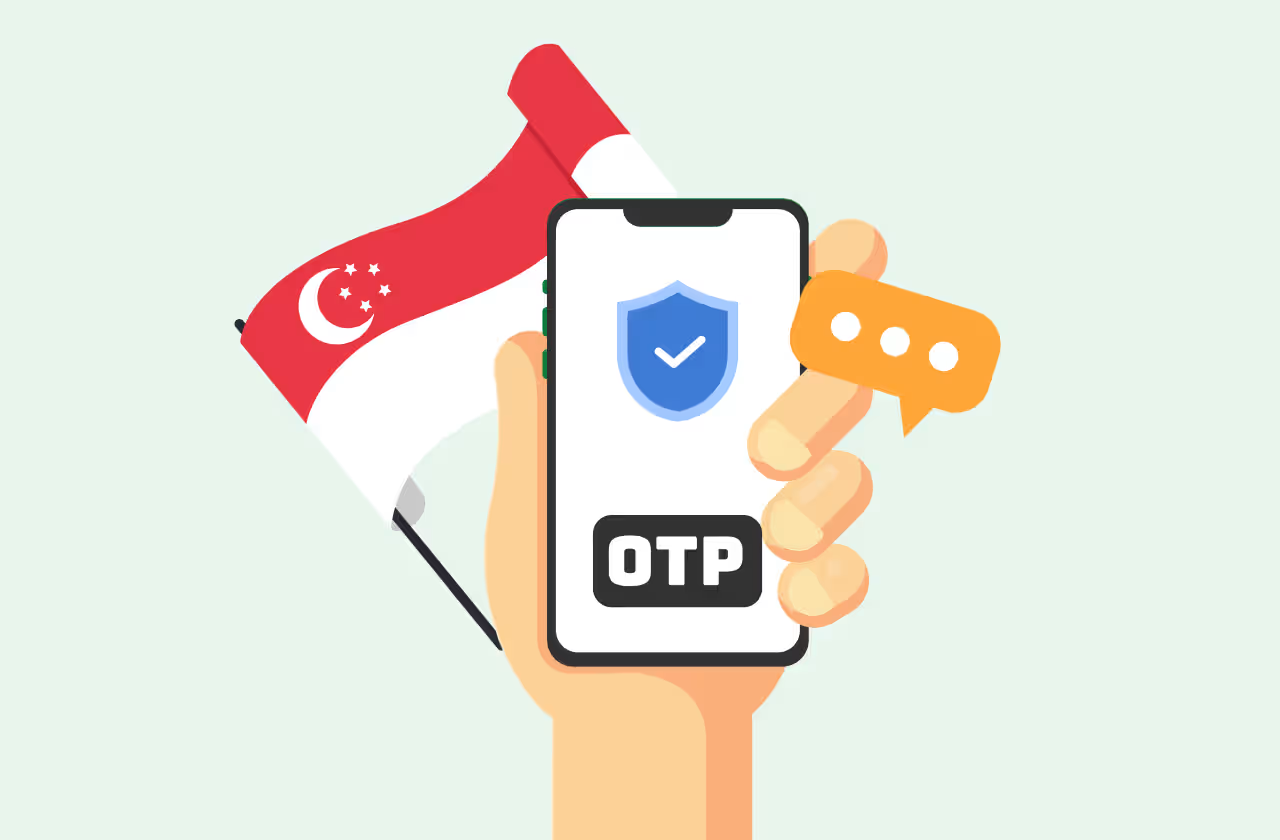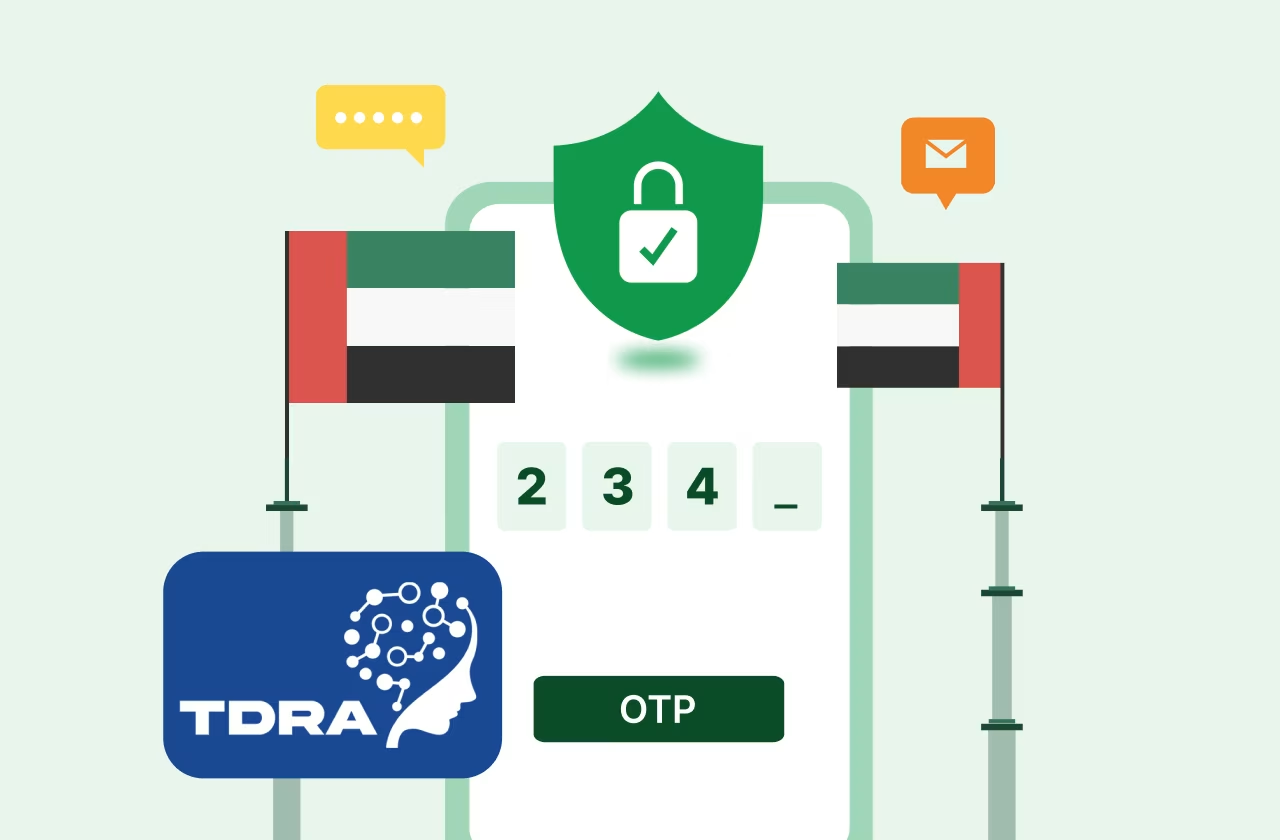Key Takeways
- Otentikasi berbasis P2A meningkatkan keamanan dengan melibatkan interaksi yang diprakarsai pengguna, mengurangi risiko penipuan dan akses yang tidak sah.
- Metode ini menawarkan pengalaman pengguna yang mulus dan tanpa gesekan, menyederhanakan proses otentikasi menjadi satu langkah dan meningkatkan tingkat konversi.
- Otentikasi berbasis P2A mendukung jangkauan global melalui saluran SMS yang ada di mana-mana, menjadikannya alat yang efektif untuk otentikasi aman di berbagai industri.
- Tidak seperti verifikasi OTP tradisional, otentikasi berbasis P2A meminimalkan risiko intersepsi dan serangan phishing dengan memanfaatkan partisipasi pengguna.
- Industri seperti BFSI, e-commerce, dan hyperscalers mendapat manfaat dari otentikasi berbasis P2A karena keamanannya yang tinggi, kemudahan integrasi, dan efektivitas biaya.
P2A messaging (Person-to-Application) based authentication refers to the process wherein a mobile user initiates interaction by sending an SMS to an application.
Unlike A2P (Application-to-Person) messaging, which involves businesses sending messages to users, P2A messaging involves the end-user triggering the interaction by sending an MO SMS to registered numbers such as shortcodes or long codes.
The MO SMS can be sent either manually by the user or triggered automatically by apps running on their device.
With P2A-based authentication, businesses can elevate their systems to modern standards, ensuring seamless and secure verification over various channels like Free-To-End-User (FTEU) codes, shortcodes, toll-free numbers, and long codes.
This article explores the advantages of incorporating P2A-based authentication into your processes, its workings, and its differences from traditional OTP verification.
Get in touch with our team to know how you can implement P2A based authentication system.
How Does P2A Based Authentication Work?
P2A-based authentication involves several steps that ensure a secure and seamless user experience. Here’s how it works:
- User Initiates Message: The process begins when a user sends an MO SMS to a specific number provided by the application, this process can either be manual or automatically triggered by the application itself.
- Message Reception: The mobile network receives the MO SMS and routes it to the application’s messaging platform.
- Processing by Application: The messaging platform processes the MO SMS and verifies the user’s identity based on the content of the message and the sender's phone number or MSISDN.
- Authentication Response: The application sends a response back to the user confirming the authentication status, either through a follow-up MT SMS or an in-app notification.
Factors involved in P2A Based Authentication
- User’s Mobile Device: The device from which the user sends the Mobile originated SMS.
- Short Code or Long Number: The designated number to which the user sends the SMS.
- Mobile Network: The carrier network that facilitates the transmission of the SMS.
- Messaging Platform: The intermediary system that processes the incoming SMS and communicates with the application.
- Application Backend: The application’s backend system that verifies the user’s identity and manages the authentication process.
Benefits of P2A Based Authentication
- Seamless Device Pairing: P2A-based authentication seamlessly pairs the user's device with their account, significantly reducing the risk of authentication fraud. By leveraging the user's mobile number, businesses can ensure that each authentication request is genuine and tied to the correct device.
- Secured Transactions: Security is non-negotiable, especially when sensitive data and transactions are involved. P2A-based authentication supports multi-grade encryptions, ensuring that all communication between the user and the application remains secure. This added layer of security is crucial for industries like banking and e-commerce.
- Hassle-Free Integration: One of the standout features of P2A-based authentication is its backend-driven nature. The integration with mobile apps is seamless, requiring zero user input. This makes the authentication process entirely transparent to the end-user, enhancing their overall experience.
- Frictionless Process: Gone are the days of clunky sign-up processes. P2A-based authentication offers a frictionless approach to pairing devices and customer accounts during sign-up. This smooth one click process encourages higher conversion rates and reduces drop-offs.
- Increased Conversion Rate: Traditional authentication methods often involve multiple steps, leading to user frustration and abandonment. P2A-based authentication simplifies this into a single-step process, resulting in a higher conversion rate and a more satisfied customer base.
- Fraud Prevention: By pairing the user’s device with their account, P2A-based authentication helps mitigate potential fraud like smishing. This direct link ensures that even if a user's credentials are compromised, unauthorized access attempts can be identified and blocked.
- Global Reach: P2A authentication leverages the omnipresence of the SMS channel, allowing businesses to connect with users globally. This wide reach makes it an effective tool for secure authentication.
P2A Authentication vs Traditional OTP Verification?
P2A authentication differs from OTP verification on a lot of aspects.
Factor:
P2A Authentication
OTP Verification
Initiation
- The user initiates the authentication process by sending an MO SMS to the application.
- The application sends an OTP to the user in the form of a MT SMS, who then enters it to complete the authentication.
Security
- More secure due to user participation and the reduced risk of OTP interception.
- Prone to interception via phishing or SIM swapping attacks.
User Experience
- Simpler and more intuitive as users are familiar with sending SMS.
- Requires users to wait for an OTP and enter it, which can be cumbersome.
Cost
- Can be more cost-effective as it leverages existing short-messaging-service infrastructure.
- Involves costs associated with sending OTPs to users.
Applications of P2A-Based Authentication
BFSI Sector:
- Use Case: Secure login and transaction verification. As of now, they mostly use OTP SMS for banking industry.
- Benefit: Reduces the risk of fraud and unauthorized access to financial accounts.
Payment Interface Registration:
- Use Case: Streamlines the process of registering payment methods securely.
- Manfaat: Memastikan kerumitan minimal dan keamanan tinggi bagi pengguna.
Hyperskaler:
- Kasus Penggunaan: Manajemen akses pengguna yang aman dan dapat diskalakan di lingkungan yang luas dan terdistribusi.
- Manfaat: Memastikan hanya pengguna yang berwenang yang dapat mengakses sumber daya cloud penting.
Situs Web E-commerce:
- Kasus Penggunaan: Menyediakan login pengguna yang aman dan mulus.
- Manfaat: Meningkatkan keamanan dan meningkatkan pengalaman pengguna dengan meminimalkan gesekan selama proses login.
Kesimpulan
Otentikasi berbasis pesan P2A adalah metode ampuh yang memanfaatkan keandalan dan keberadaan di mana-mana SMS teknologi untuk menyediakan proses otentikasi yang aman dan ramah pengguna.
Dengan melibatkan pengguna dalam inisiasi otentikasi, ia menawarkan keamanan yang ditingkatkan dibandingkan metode OTP tradisional. Kesederhanaan, jangkauan global, dan efektivitas biaya menjadikannya solusi ideal untuk berbagai industri, mulai dari keuangan hingga perawatan kesehatan.
Seiring berkembangnya kebutuhan keamanan digital, otentikasi berbasis P2A menonjol sebagai metode yang kuat dan andal untuk melindungi identitas pengguna dan memastikan interaksi online yang aman.
Otentikasi P2A dengan Pusat Pesan
Message Central adalah pelopor dalam teknologi CPaaS dan menyediakan rangkaian otentikasi lengkap. Bisnis yang ingin mengeksplorasi otentikasi P2A dapat Hubungi dengan tim.










